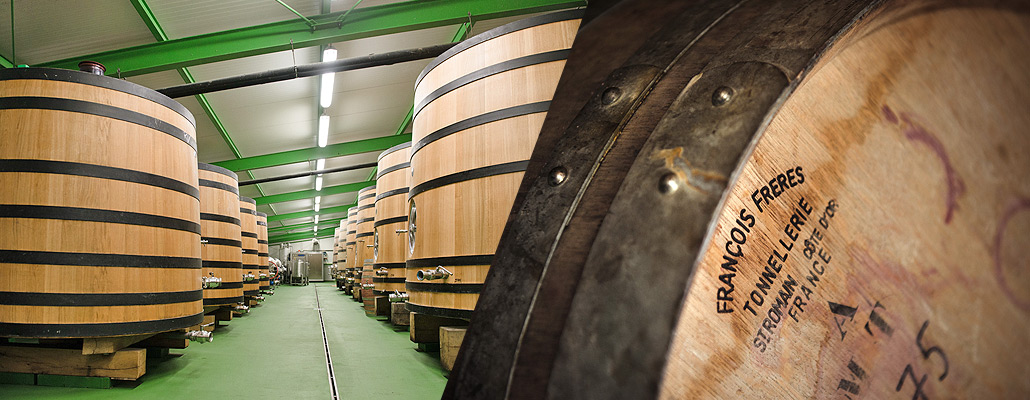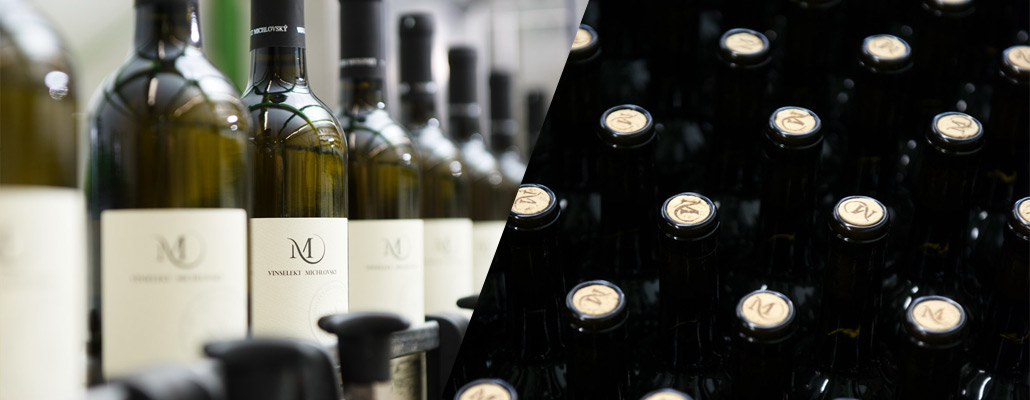About wine
The beginnings of vine growing in the Moravia region are set in the third century AD and we owe the expansion of the wine craft to our territory to the old Romans, but the greatest development of wine production stared with the advent of Christianity.
The original character of Moravian wines, which are characterized by delicate aromatic substances, fruit tones, lightness and freshness, are dependent on the significant impact of the climatic and soil conditions of the region.

The most unique natural terroir includes the Palava Hills in the Mikulov region. There are unique plant and animal communities in the Pálava Hills, which is a UNESCO biosphere preserve.
The very warm and dry climate here promotes not only a unique flora and fauna, but also influences the local winery, together with the soil conditions. The foot of the Pálava Hills with lime soils belongs, of course, to the Mikulov wine region. Here, on the southern and southwest slopes, there is a significant part of Vinselekt Michlovsky vineyards. The limestone subsoil and the warm climate of the best Moravian vineyard give Miloš Michlovský's wines an original structure and an authentic spice, fullness and length.
Varieties for the production of white wines occupy more than 80% of the area in the Pálava vineyards, the traditional varieties Welsh Riesling and Green Veltliner are complemented, for example, by Pinot Blanc and Chardonnay, a variety particularly suitable for limestone subsoil. Other varieties include Sauvignon, Sylvaner, and an irresistible site belongs to Pinot Gris. Riesling and Neuburger are also grown in selected areas. The local unique is tThe newly grown aromatic vine variety, which bears the name Pálava, is locally unique. Blue varieties form a minority share.
"Wine after it is born in the head, is made mainly in the vineyard."
Wine is a beverage in which the influence of natural conditions (soil character, amount of precipitation and sunshine duration) is reflected in a unique way. The unique character and quality of the wine is given by the personality of the winemaker. It is precisely the choice of varieties and gentle interventions on the vineyard, but especially during the processing of the grapes, creates the individuality of the wine. That is why wine is not only a noble drink but also very varied. The winemaker's year lasts for 12 months and is not only about grape harvest time.
At the end of winter the vineyard rests, but not the winemaker. His meticulous work in his cellar continues on from the work done in the vineyard, and simultaneously the weather must be monitored and checked to make sure the frosts do not cause great damage in the vineyards. Practically immediately after the New Year he begins with the pruning of the vines. By the advent of spring, the cutting has to be completed.
In spring, the sap flows through the vine and the buds are produced. The vine groves are luxuriant in May, the leaves grow rapidly, and some of the buds turn into surreptitious berries. Now, a steady course of weather without rain is important. On the fruitful vineyards, new crops are starting to begin, last year's wines have a refined bouquet and palate and winemakers have time to evaluate the results of their work.
During the summer and autumn the grapes gradually mature. Mother nature is now beginning to judge the year-round care of the winegrower, and the weather mercilessly decides on the content of sugar and aromatic substances in the grapes, which will soon be essential for the quality of the future wine.
As a rule, in the second half of September and in October, winemakers have the most work - harvesting the results of their year-long work. In Vinselekt Michlovsky, the grapes are already sprinkled with dry ice in the vineyard, which prevents oxidation of terpenic aromas and allows the maximum preservation of other precursors of bouquet until the grapes are processed.

The grape processing itself begins with the separation of berries from the stem, ie, by destemming. The procedure for white and red wines varies considerably. Whilst in white wines the grapes are pressed to give juices, which is subsequently fermented, in the case of red wines, the so-called musts, which consists of berry flesh and skins, is left to ferment and is pressed after fermentation. Fermentation of fine yeast cultures is added to the fermented white wine juice, and the wine is usually pumped into stainless steel tanks, where the character is further cultivated.
The processes of fermentation, developing, and maturation of wine are seemingly invisible, but they actually conceal the real abilities of the winemaker, who has to combine vast practical knowledge and experience with intuition, and yet reach the uniquely unrepeatable product - wine.
An important factor in making wine is the containers. The process of winemaking usually takes place in both stainless steel tanks and wooden barrels, which are indispensable for high quality wines. In the production of barrique wines, oak barrels form an unmistakable bouquet in the wine, soothe the tannins and create a richer structure.

Selected batches of wines are bottled, for white wines at least one year old. Prior to distribution for sale, the wines further mature in the bottles. Bottled wines are stored in a specially tempered warehouse with a maximum temperature deviation of 0.5 °C, for at least half a year, but often for several years.


